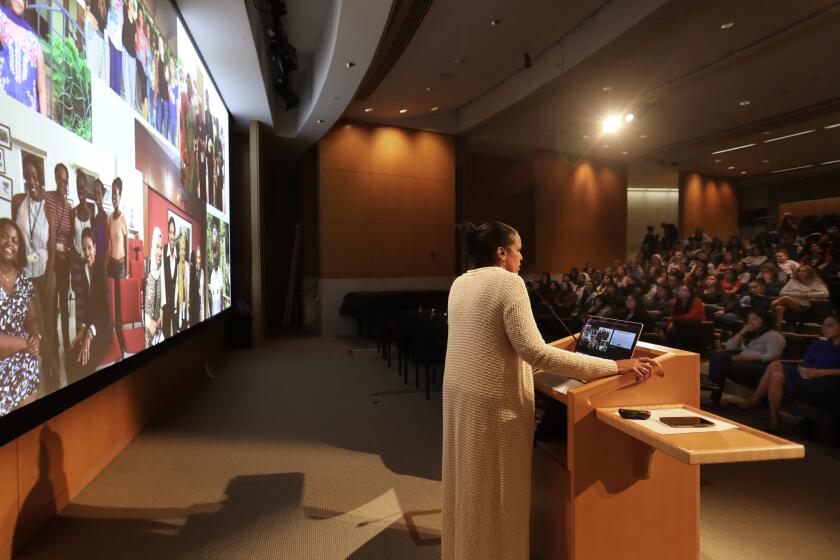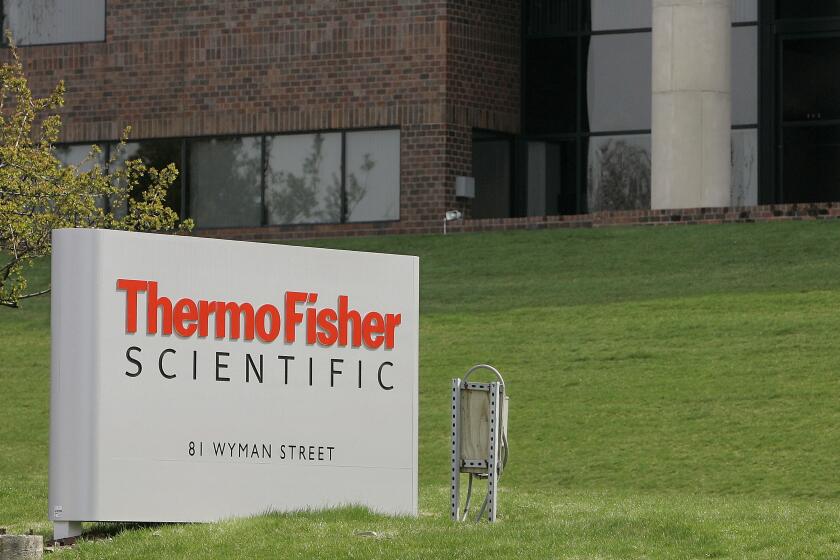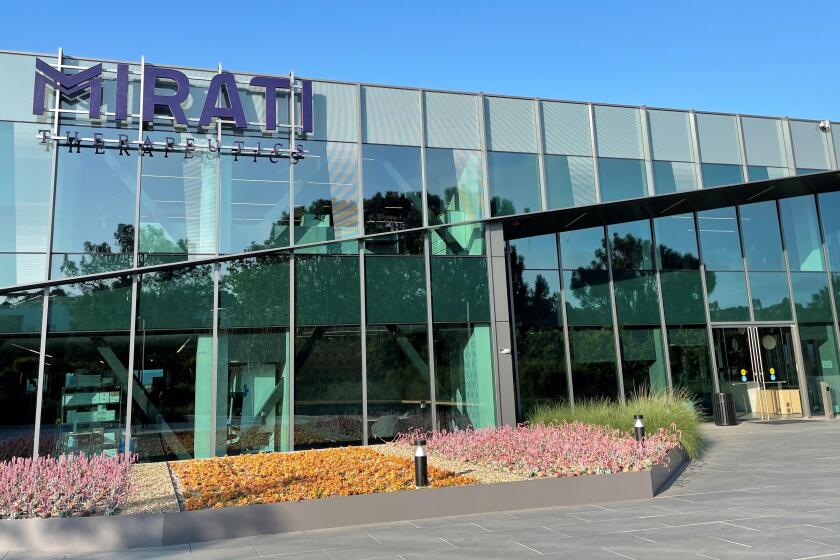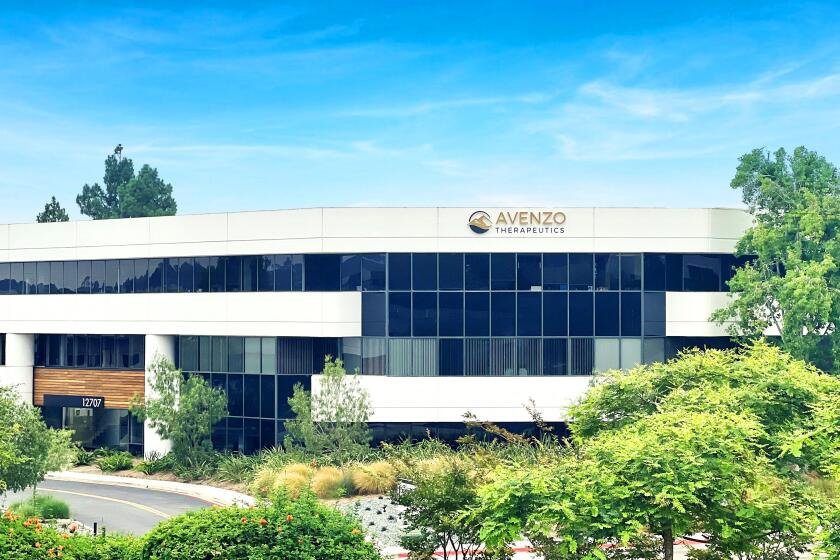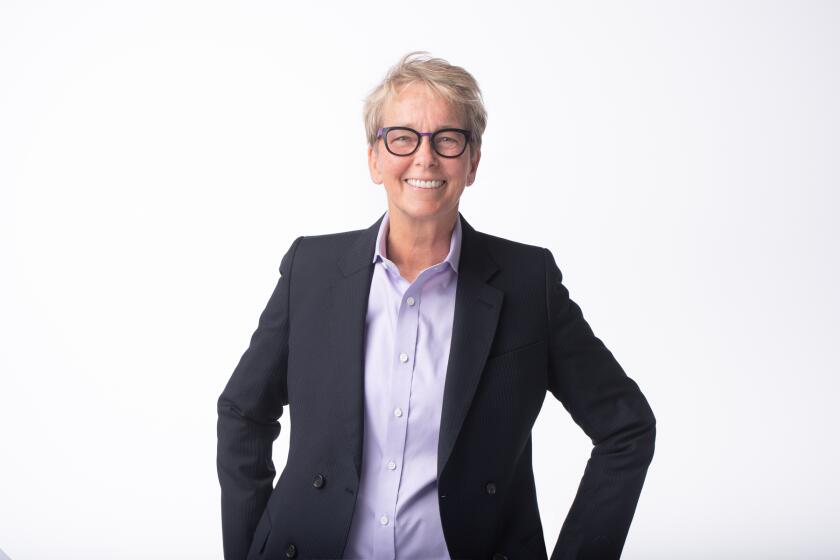Thermo Fisher elevates Carlsbad-based executive
Mark Stevenson, a Carlsbad-based senior executive at Thermo Fisher Scientific, has been promoted to chief operating officer of the scientific and medical equipment giant.
Formerly the company’s executive vice president and president of its Life Sciences Solutions division, Stevenson is now also responsible for the company’s Laboratory Products and Analytical Instruments businesses.
“I have a role throughout the company,” Stevenson said. “Those three groups of businesses represent a little more than half the revenues of the company.”
Publicly traded, Waltham, Mass.-based Thermo Fisher is valued at nearly $70 billion. The company brought in a little over $18 billion revenue in 2016.
Stevenson’s Aug. 1 promotion, and the company’s continued growth in Carlsbad, indicates San Diego County’s importance to the future of Thermo Fisher since the company’s 2014 purchase of Carlsbad’s Life Technologies for $13.6 billion.
“Thermo Fisher is the world’s leader in serving science, but has chosen to make San Diego its life sciences headquarters,” Stevenson said. “It shows the power of collaboration here in the community.”
From just under 1,400 employees at the time of the purchase, the Carlsbad location is now staffed with nearly 1,600 employees, the company says.
The promotion also illustrates how Stevenson has accumulated more responsibilities as corporate mergers and acquisitions put him in progressively larger companies.
Stevenson had been previously president and chief operating officer of Applied Biosystems before a 2008 merger with Carlsbad’s Invitrogen Corp. created Life Technologies.
As part of the promotion, Stevenson will work closely with the company’s senior vice president and chief information officer, Joe Beery, also based in Carlsbad. Together, they’re to lead Thermo Fisher’s push to become the world’s leading digital science company, by developing its digital science capabilities.
Stevenson said he and Beery have been working together for nearly a decade, since both were at Life Technologies. He had been president of the company, a diversified research products company particularly strong in genomics.
Themo Fisher’s chief scientific officer, Alan Sachs, M.D., will help develop the company’s plans. Specific areas of focus include precision medicine, along with cell therapy and immunotherapy.
“That scientific office will drive future innovations for the needs of our pharmaceutical and academic customers,” Stevenson said. Precision medicine, cell therapy and immunotherapy are three areas of focus in the scientific office.
By using digital technology, Beery will develop more ways for customers to leverage the information from their laboratory instruments, Stevenson said. Instead of having to handle data piecemeal, customers will transmit and integrate data from their instruments automatically.
“We’ll bring those capabilities to our customers to provide a much more connected laboratory, to help them bring the data out of their instruments together to make decision making,” Stevenson said. “I’m going to help guide that work to bring value to our customers.”
Beery, the chief information officer, said he and Stevenson have drawn on their long history at Life Technologies to create the digital technology capability. This links not only instruments within a lab, but labs in different cities and countries, by transferring and storing data through “cloud” based systems.
“San Diego is one of our largest software development centers of excellence,” Beery said. “We do a lot of this capability work here for e-commerce, for our cloud, for a lot of our connected labs and our connected instruments.”
By ensuring automation and easy flow of information to where it needs to be, Thermo Fisher aims to help customers increase their productivity and free up time for innovation, Beery said.
“We all get our information over mobile phones right in front of ourselves,” Stevenson said. “That’s not been the case in the laboratory. The instruments have typically been disconnected, or you’ve got to be in front of it to see what’s going on.
“So our vision is launching instruments that are connected to the cloud, sharing data,” Stevenson said. “Scientists can go to a coffee break, have lunch, even go home, and be able to view on their iPhone the instrument.
“So that’s where they get their personal productivity, to be able to see the data from the phone. We just launched the first of the instruments doing that, and we’ll be launching a series in the future as Joe and I build up the vision together.”
For more reading
Increased NIH funding helps find cures
Thermo Fisher completes Life Tech buy
Life Tech to be sold for $13.6 billion
Invitrogen to buy Applied Biosystems for $6.7 billion, take its name
Science Playlist

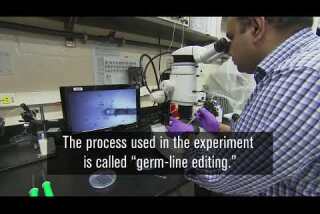
In a first, scientists rid human embryos of a potentially fatal gene mutation by editing their DNA

10 interesting facts about Mars

Kids can add years to your life

LA 90: SpaceX launches recycled rocket

Ocean temperatures warming at rapid rate, study finds
bradley.fikes@sduniontribune.com
(619) 293-1020
Get U-T Business in your inbox on Mondays
Get ready for your week with the week’s top business stories from San Diego and California, in your inbox Monday mornings.
You may occasionally receive promotional content from the San Diego Union-Tribune.


